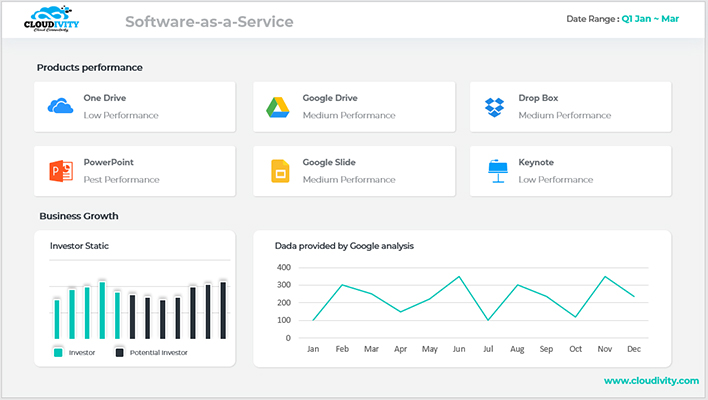What is Saas

What Is SaaS in Cloud Computing?
SaaS stands for Software-as-a-Service. In the world of cloud computing, SaaS refers to a model of service distribution in which customers can access web applications online. With SaaS, users don’t have to download and install software on their computers. Instead, they can access it online using a web browser.
How Does Software-as-a-Service (SaaS) Work?
Software vendors who use the SaaS model to deliver software code the application that they want to provide to customers. They then set up the database and servers necessary to host the application over the internet.
To access the application, users go to the website provided by the vendor and register an account. Most SaaS vendors provide their services on a subscription basis—users can access the application so long as they pay the monthly subscription price.
Apps delivered as can often be accessed across multiple devices including mobile devices. User data is stored online on the vendor’s servers and saved in real-time. SaaS providers maintain both the hardware and the software—they carry out updates and maintenance so that the user doesn’t have to. The software infrastructure behind SaaS can be quite complex, including several data centers in different locations around the world.
Depending on the service in question, SaaS vendors may provide users with apps that they can install on their computers or mobile devices for better performance compared to web browsers. Unlike traditional software, however, these apps store user data in the cloud.
What is SaaS – Examples
SaaS has become a ubiquitous software delivery model for a wide range of applications for personal as well as business use. Popular SaaS offerings include web hosting apps like Dropbox, Google Drive, and iCloud that enable users to store or backup data online in the cloud.
A business that needs more storage space can choose any of these cloud storage services as well as many others to increase their storage capacity without investing in on-premise storage solutions like expanding their hard disk capacity or creating a costly data storage center.
Another Saas example is productivity suites like Microsoft Office 365 or Google Apps that include a wide range of office applications such as word processors, spreadsheet and presentation apps, email, calendar, and more.
Today, many businesses also access accounting, warehouse management, inventory, marketing, and customer relations apps as SaaS solutions.
But SaaS services don’t stop there. Platforms like Amazon AWS provide a wide range of apps and software development tools as SaaS solutions including advertising, financial services, computing power, blockchain, and more.
 Advantages and Disadvantages of SaaS
Advantages and Disadvantages of SaaS
Now let’s take a look at the pros and cons of Software-as-a-Service in cloud computing to make it easier for you to decide whether this is the right model for your needs.
SaaS Advantages
- Quick Deployment – You can access a SaaS app within minutes and often test it out for free. No need for time-consuming software installs, hardware setups, or technical know-how. SaaS apps work across platforms and devices.
- Cost-Effective – For many users, SaaS is more affordable since it requires a lower upfront investment and allows you to choose the best plan for you. You can often also discontinue it at any point without hardware debt.
- Scalability – You can upgrade or downgrade your plan and the features that come with it according to your needs.
- Easy Maintenance – The vendor takes care of software updates and hardware maintenance for you.
SaaS Disadvantages
- Connectivity – To access SaaS services you need an active internet connection. When the internet is down, you won’t be able to access them.
- Security Concerns – SaaS apps store your data online in the cloud. Most services use encryption and follow an advanced security protocol, but even so, there is a higher potential risk for data theft and data leaks.
- Control – With SaaS you have to settle for the functionality that the vendor provides and can’t customize the software.
What is SaaS – The Bottom Line
For many people and businesses today, Software-as-a-Service is an accessible, cost-effective, and attractive software delivery model that makes perfect sense to use. It’s only if you have very specific software requirements or handle very sensitive data that you may want to think twice before using a SaaS service.
What is SaaS – Top SaaS Applications
- Salesforce – is an online solution for customer relationship management, or CRM.
- ServiceNow – workflows for the modern enterprise
- Shopify – is a commerce platform that allows anyone to set up an online store and sell their products
- Workday – the finance, HR, and planning system for a changing world
- Atlassian – products for improving software development, project management, collaboration, and code quality.





